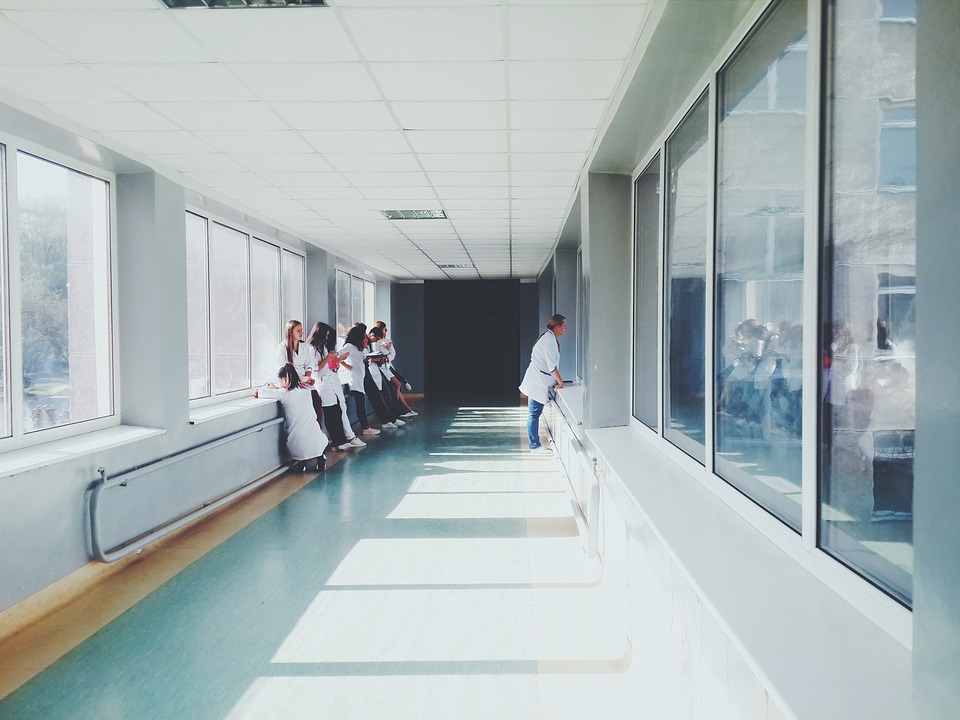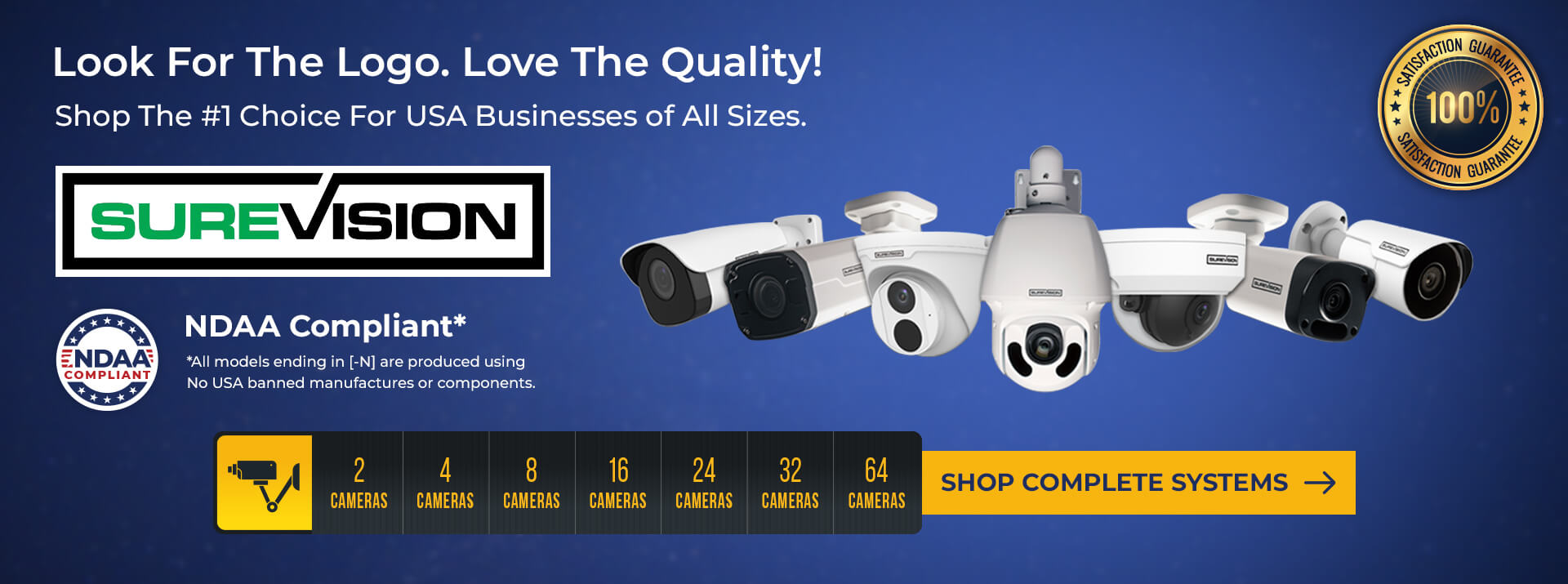How to Measure Security Camera Quality
Posted by Gregory DeRouanna on Feb 23, 2019

One of the biggest challenges when it comes to choosing business and home security cameras is measuring security camera quality. While most manufacturers and vendors promote their security cameras and systems as having exceptional image quality, knowing whether it’s true or not is not quite as simple as taking their word for it. The truth is, there are great security cameras on the market offering great picture and video quality for your surveillance needs.
CCTV Security Pros offers you a closer look at how you should measure quality in a security camera system.
Understanding Security Camera Quality
A security camera’s resolution isn’t the only deciding factor when it comes to measuring image or video quality. There are other factors too, and understanding them can help you measure security camera quality and pick out the best security cameras for your home or business indoor and outdoor surveillance needs.

Image Resolution
Image resolution is simply a standard way to measure the size of the video being produced. Small/low-resolution video is not as good because their images are composed of fewer pixels. The larger the image being recorded by the security cameras, the higher the resolution and quality of the video.
When choosing a quality HD security camera for your business or property, consider this table of resolutions.
|
Megapixel Cameras |
Max Resolution |
Total Pixels |
Name by Vertical Pixels |
|
1MP Security Cameras |
1280*720 |
921,600 |
720p Security Cameras |
|
2 Megapixel Security Cameras |
1920*1080 (HD) |
2,073,600 |
1080p Security Cameras |
|
3 Megapixel Security Cameras |
2048*1536 |
3,145,728 |
1536p Security Cameras |
|
4 Megapixel Security Cameras |
2560*1440 (2K) |
3,686,400 |
1440p Security Cameras |
|
5 Megapixel Security Cameras |
3072*1728 |
5,308,416 |
1728p Security Cameras |
|
8 Megapixel Security Cameras |
3840*2160 (4K) |
8,294,400 |
2160p Security Cameras |
720p, 1080p, and 1440p security cameras are the most common security cameras in the market. 1080p HD (2MP) security cameras have become the standard in today’s surveillance market. However, at CCTV Security Pros, we’re taking a step further to ensure that our customers enjoy the best quality security camera systems. All new security cameras feature a minimum of 4MP for 1440p resolution.
Lens
There are three types of lenses used in security cameras: fixed lens, varifocal lens, and zoom lens. Each of these will determine the quality of a security camera in one way or another. For instance, fixed lens security cameras come with a fixed focal point. So, if you’ll be using this type of camera indoors or outdoors, or even to monitor an entire room or hallway, you need to choose the most suitable fixed lens camera for your surveillance needs.
To monitor an entire room, a fixed lens camera with a short focal length will give you the best quality images. For a narrow hallway, a longer focal length will be great. Varifocal lens security cameras come with an adjustable focal length and can be used to monitor narrow hallways and wide rooms. The focus has to be adjusted manually each time you adjust the focal length to ensure the final image isn’t out of focus, which would mean poor quality images or videos.
On the other hand, zoom lens security cameras are the best option when measuring the quality of a security camera. Instead of stressing yourself over the focal point or field of view, you just zoom in and out for a better view. With the auto-focus feature, you don’t have to do the zooming yourself. CCTV Security Pros brings you a range of PTZ controllable security cameras with even greater capabilities like wide-angle viewing and night vision for greater image/video quality.
Image Sensor
The image sensor in a security camera also impacts the quality of images or videos you’ll get. An image sensor is a camera hardware component that captures light in a camera, converting it into an electronic image. The quality of a security camera’s image sensor will often dictate the overall image quality. There are two types in the market: CCD and CMOS image sensors.
CCD is an older technology than CMOS but considered superior. It performs better in low-light conditions, has lower white noise, wide dynamic range, and higher definition. The only downside is that CCD image sensors are expensive to construct, consume more power, and produce lower frame rates - reasons why CMOS is a frequent standard for measuring quality in today’s security camera systems.
CMOS image sensors are more compact, less expensive, produce higher frame rates, and better color. This means better image quality for your security cameras. The most popular image sensor formats are 2/3″, 1/2″, 1/3″, and 1/4″. 2/3″ image sensors are the best for high-sensitivity and excellent performance in low-light outdoor environments. 1/2″ format is mid-range and is widely used by many manufacturers.
Frame Rate
The frame rate often defines the number of frames or images that a security camera captures per second. Frame rates that are below 15 frames per second are poor quality and can be a pain to watch. The best frame rate for home and business security cameras is between 25 to 30 fps. Look out for these numbers when measuring security camera quality.
WDR/HDR
While Wide Dynamic Range (WDR) and High Dynamic Range (HDR) are technically different, they typically serve the same purpose of improving a camera’s dynamic range. These two features simply solve the dilemma of balancing out lighting to achieve the best possible image or video quality. Of the two options, WDR is preferred.
Video Compression
Video captured by security cameras is typically compressed by the camera itself, or by the recorder to make the best use of storage space. Unfortunately, during this process, sometimes, image quality can be lost. Most manufacturers use h.264 and MPEG-4 video compression. H.264 is the standard option in security camera systems.
At CCTV Security Pros, all new video recorders use H.265 video compression technology for the best possible security camera quality and the most economical use of storage space.
Night Vision
Security cameras with night vision capabilities use infrared LEDs which allow them to see even in complete darkness. In most cases, images will turn to black and white with night vision viewing. Some night vision cameras can only see in low-light conditions and may not be operable in zero-light conditions.
For outdoor security cameras, the recommended range is no less than 60 ft. For indoor security cameras, a 30 ft night vision range is considered standard. Check these factors to help you measure the quality of home or business security cameras before purchasing.

Buy the Best Security Cameras
As a business or homeowner, it’s important to understand your security or surveillance needs before deciding what type of security cameras you want to buy. Whether you want security cameras for covering wide areas of your property, face and license plate recognition, indoor or outdoor surveillance, or for your budget, image and video quality has to be considered.
If you’re in the market for commercial-grade security cameras and systems, look to CCTV Security Pros first. All our security systems support remote viewing on mobile phones and are easy to set up using a simple QR code on your NVR. Learn more about our quality security cameras and systems by visiting our Learning Center or order now and enjoy our free unlimited USA support for easy installation.
Have any questions? Talk to us now at 888.653.2288.




